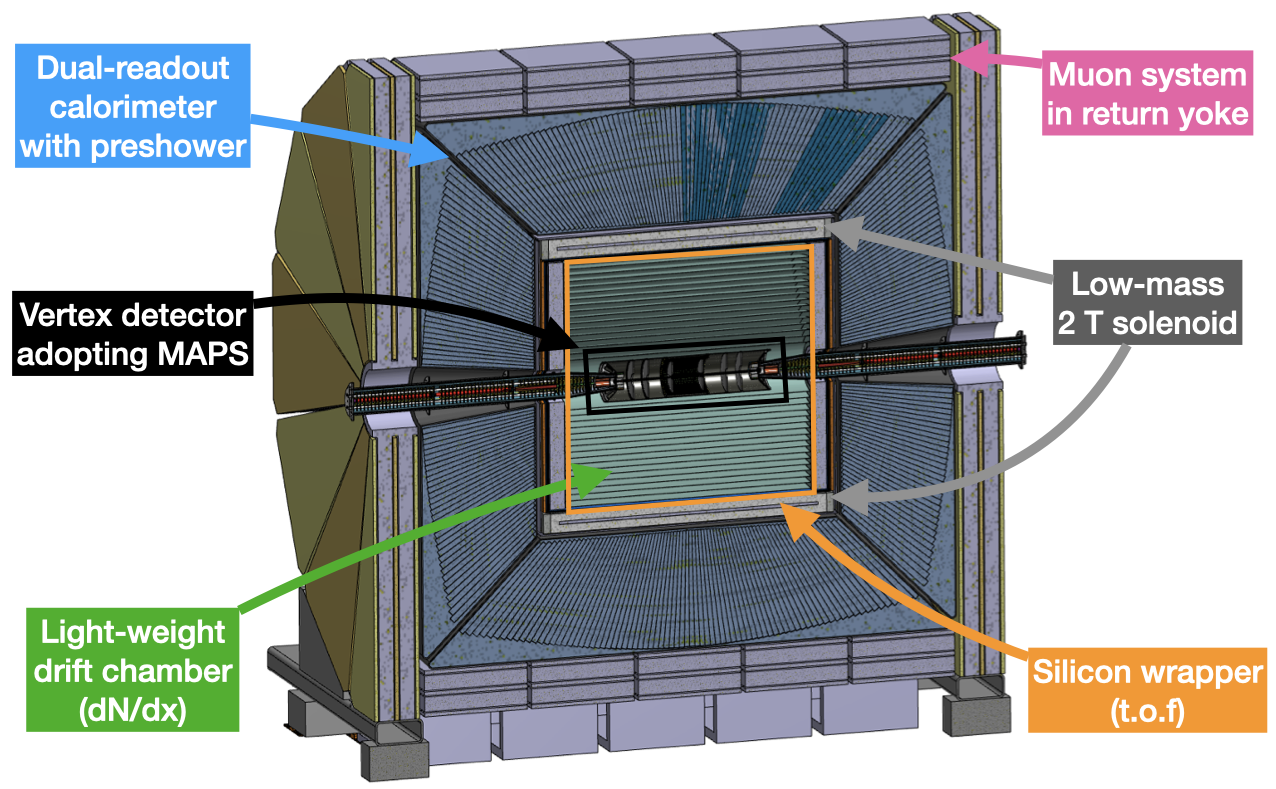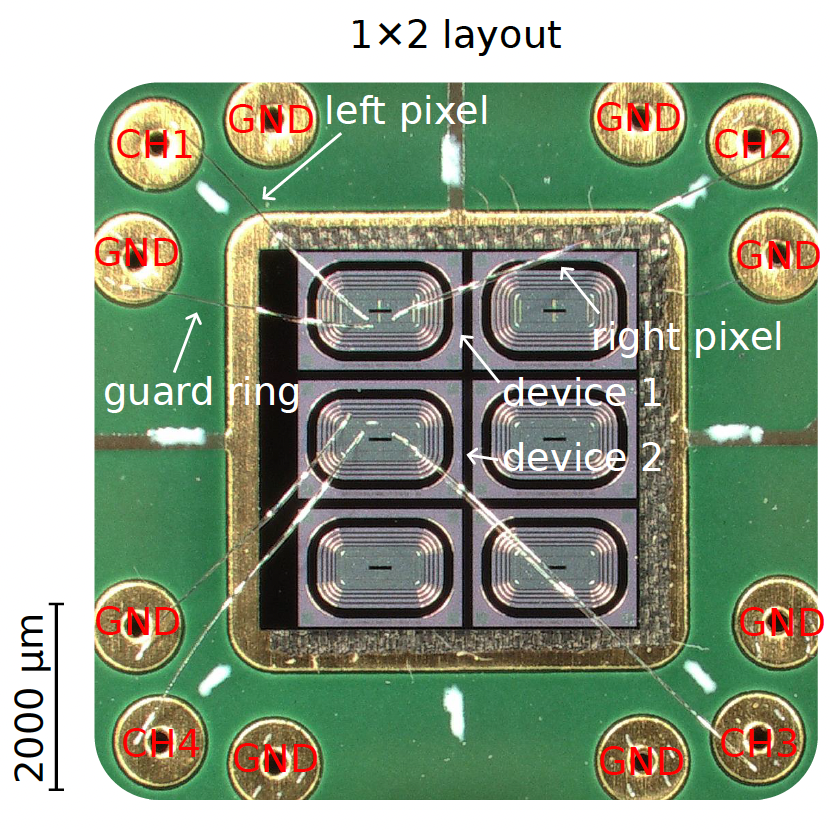Detector R&D

The largest experimental challenge at the FCC-ee is the enormous luminosity at the Z pole around 91 GeV center-of-mass. The detectors need to sustain a significant beam background while not missing any relevant collision events. To fully leverage the tiny statistical uncertainties coming from the sample of 6·1012 Z bosons, the experiments need to achieve systematic uncertainties at the O(10-4) level—a formidable challenge for FCC-ee detectors.
Vertex detector R&D
Our group performs detailed and extensive simulations of the FCC-ee vertex detector to guide the conceptual and, eventually, technical design of these central components to any FCC-ee experiment. We are specifically investigating the challenges and opportunities of ultra-light vertex detectors, that would greatly enhance the vertex reconstruction capabilities, enhancing and broadening the physics programme.
All current vertex detector designs for FCC-ee foresee Monolithic Active Pixel Sensors (MAPS). MAPS combine the generation, amplification, and readout of particle signals in a single piece of silicon, minimizing power consumption and enabling very light detectors. We characterize and develop MAPS prototypes in the 65 nm TPSCo technology (CE-65 and OCTOPUS), with the final goal of producing a large, efficient, and fully functional sensor with a 3 µm spatial resolution to be used at FCC-ee eventually.

Silicon timing detector R&D
A precision timing layer around the tracker with about 50 ps time and 10 µm spatial resolution is crucial for the FCC-ee physics program. Through time-of-flight measurements, it provides particle identification capabilities complementary to a gaseous tracker, which is crucial, for example, for efficient flavor tagging. The small spatial resolution, on the other hand, improves the momentum resolution and lets the timing layer act as a precise and stable ruler for the detector acceptance definition.
Our group performs simulations of such silicon timing layers in the context of the FCC-ee detector concepts, investigating how they can be realized given the tight performance requirements and large area to cover (> 100 m2) .
Two sensor technologies for such a timing layer are being developed and evaluated in our group:
- Pixelated low-gain avalanche diodes (LGAD)
- Monolithic active pixel sensors (MAPS) with an additional gain layer
